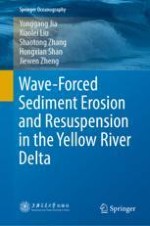This book focuses on the phenomenon of sediment erosion and resuspension in the Yellow River delta, China, which is a vital issue involved in understanding the sediment transport processes in estuarine and coastal environments, and how these contribute to the nature and distribution of geohazards in the subaqueous Yellow River delta and Bohai Sea. The most important sections of this book will be the detailed physical mechanisms and theoretical models of sediment erosion and resuspension problem fully considering the wave-induced seabed dynamic response to waves, which are particularly useful for postgraduate students and junior researchers entering the discipline of estuary and coastal sedimentation, marine geotechnical engineering, estuary and coastal engineering, harbor and waterway engineering and coastal environmental protection. This book can also serve as a textbook for advanced graduate students of Marine Engineering Geology and Estuarine Sediment Dynamics.
